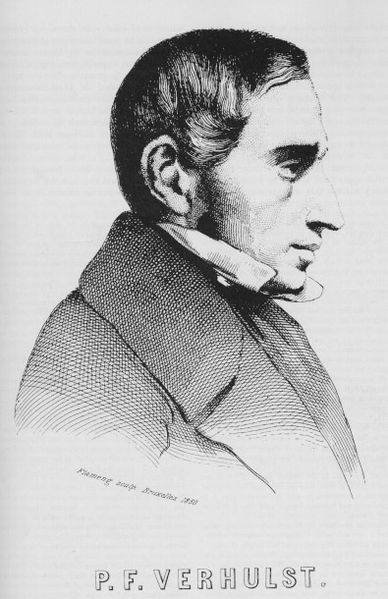<Back to Index>
- Mathematician Pierre François Verhulst, 1804
- Painter Francis Bacon, 1909
- 15th Edo Shogun Tokugawa Yoshinobu, 1837
PAGE SPONSOR

Pierre François Verhulst (28 October 1804, Brussels, Belgium – 15 February 1849, Brussels, Belgium) was a mathematician and a doctor in number theory from the University of Ghent in 1825. Verhulst published in 1838 the equation:
when N(t) represents number of individuals at time t, r the intrinsic growth rate and K is the carrying capacity, or the maximum number of individuals that the environment can support. In a paper published in 1845 he called the solution to this the logistic function, and the equation is now called the logistic equation. This model was rediscovered in 1920 by Raymond Pearl and Lowell Reed, who promoted its wide and indiscriminate use.
The logistic equation can be integrated exactly, and has solution
where C = 1/N(0) − 1/K is determined by the initial condition N(0). The solution can also be written as a weighted harmonic mean of the initial condition and the carrying capacity,
Although the continuous time logistic equation is often compared to the logistic map because of similarity of form, it is actually more closely related to the Beverton–Holt model of fisheries recruitment.
The concept of R/K selection theory derives its name from the competing dynamics of exponential growth and environmental limitation introduced here.


